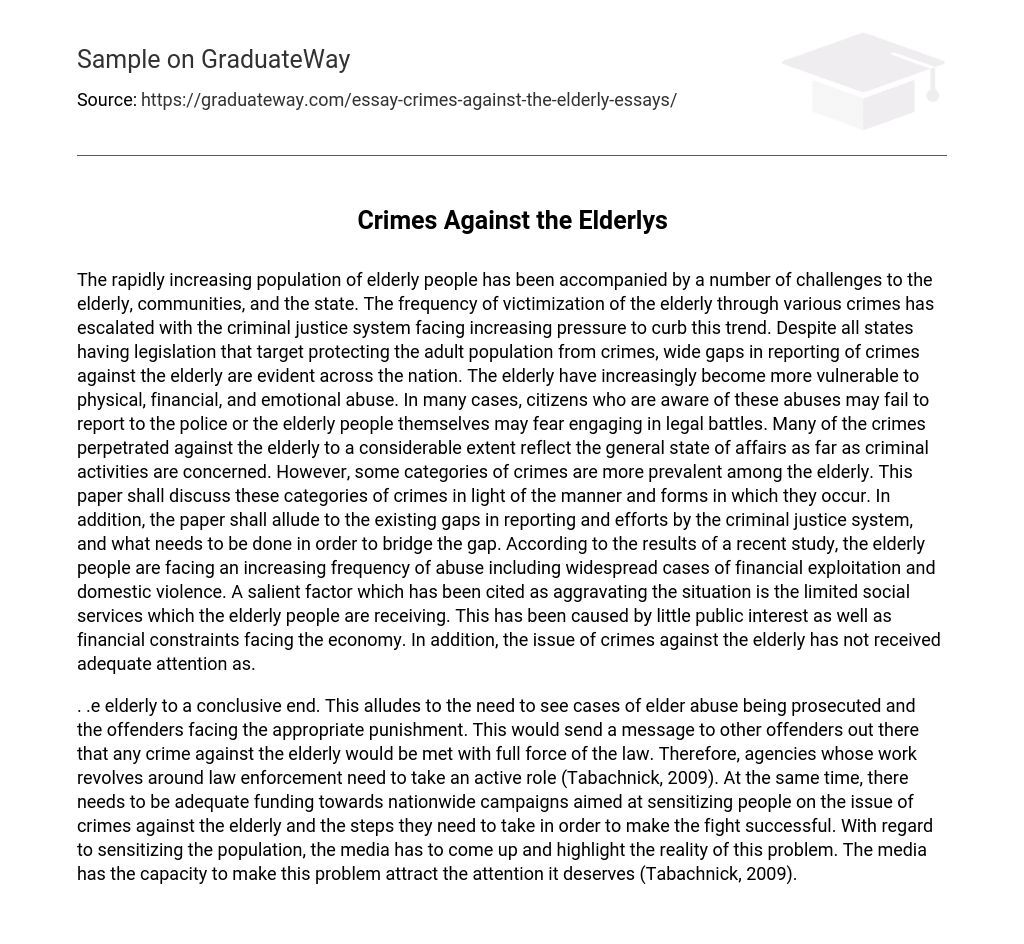The growing number of elderly individuals has posed challenges for the elderly, communities, and government. Crimes against the elderly have significantly risen, placing greater burden on the criminal justice system to handle this problem. While all states have laws protecting older adults from crime, there are disparities in how these crimes are reported across the country.
The elderly population is becoming more vulnerable to physical, financial, and emotional abuse. Regrettably, these abuses are often not reported to the police because citizens may not care or older individuals may fear legal battles. While some crimes against the elderly reflect overall criminal activities, certain types of crimes are especially common among this demographic. This article will explore these crime categories, examining how they occur and appear.
The paper aims to address the existing deficiencies in reporting and initiatives undertaken by the criminal justice system. Additionally, it will suggest remedies to bridge these gaps. According to a recent study, the elderly population is facing an increase in various forms of abuse such as financial exploitation and domestic violence. This situation has been further exacerbated due to inadequate social services available for older individuals, which can be attributed to both a lack of public interest and economic limitations.
There is a lack of attention given to crimes committed against the elderly. It is crucial to prosecute instances of elder abuse and guarantee that wrongdoers are appropriately punished. This would convey a powerful message to potential offenders that crimes against older adults will be handled with severe consequences. Law enforcement agencies need to actively engage in addressing this issue (Tabachnick, 2009).
It is important to have enough funding for nationwide campaigns that focus on making people aware of crimes against the elderly and educating them about how to combat this issue. The media plays a crucial role in bringing attention to the problem and highlighting its reality (Tabachnick, 2009).





